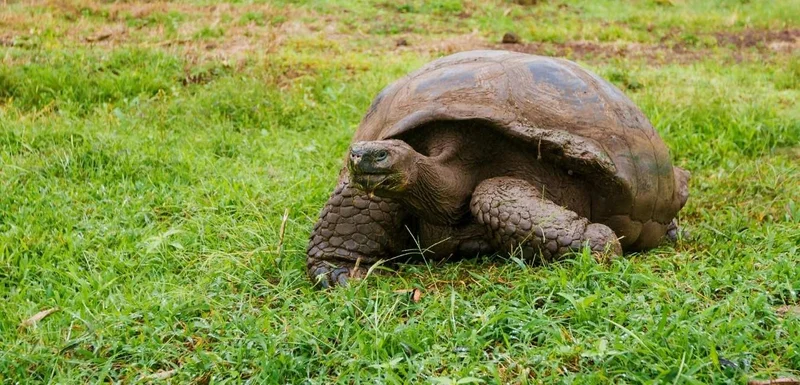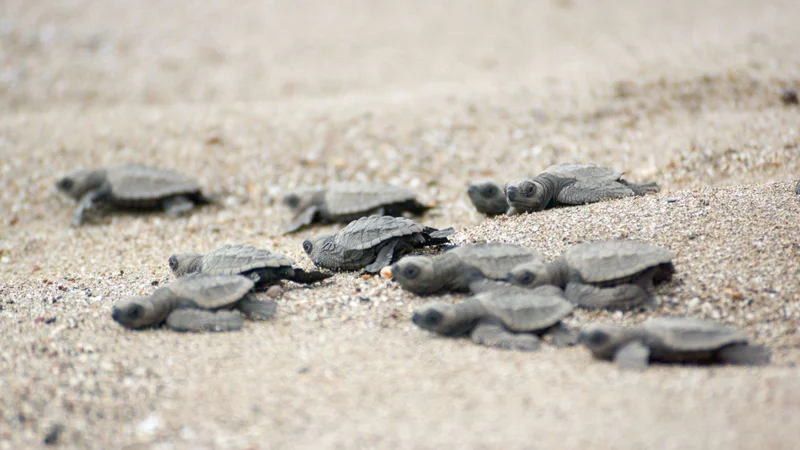
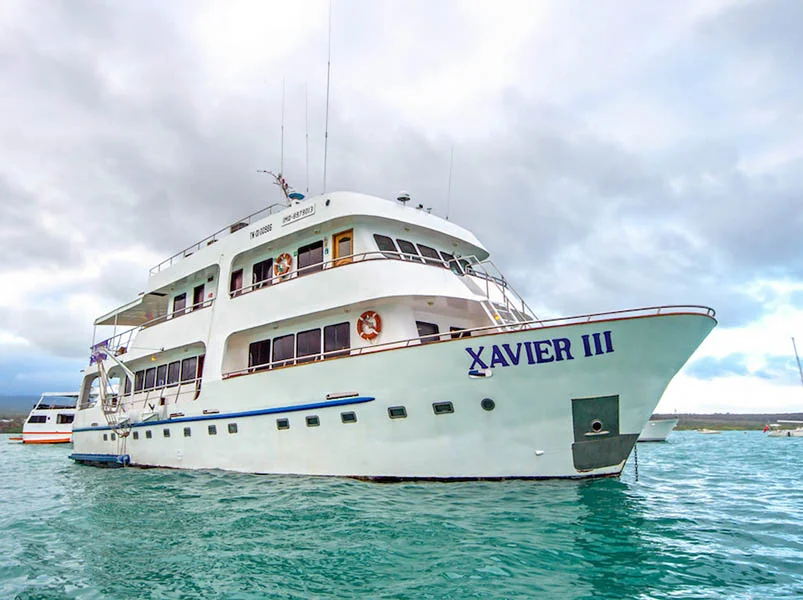
Embark on an 8-day Galapagos adventure, exploring iconic sites like Punta Suarez, Sullivan Bay, and Charles Darwin Station. Witness incredible wildlife, from blue-footed boobies to sea lions, and snorkel with marine iguanas and tropical fish. Discover volcanic landscapes, pristine beaches, and rich ecosystems on this unforgettable journey.
8 Day Galapagos Itinerary
Day 1: San Cristobal Island: Lobos Island
Lobos Island
Fly to San Cristóbal Island. Meet the guide and transfer to the boat. Visit Isla Lobos in the afternoon to spot blue-footed boobies, marine iguanas and sea lions.
Explore this tiny island by foot and boat for some great wildlife encounters. Take a panga ride to view the sea and shore birds nesting and feeding. Spot a small colony of blue-footed boobies as well as two species of sea lions.
Snorkel right off the beach at peaceful Isla Lobos, amid the families of sea lions and their inquisitive pups looking to play. Spot nesting frigatebirds and the famous blue-footed boobies resting on the shore. Be sure to bring your camera to catch some snaps at this prime wildlife watching haven.
Day 2: North Seymour Island & Mosquera Islet
North Seymour Island
Have an amazing wildlife experience visiting North Seymour Island–this island is teeming with life! Follow trails to see all the action (you may need to give way to a passing sea lion or marine iguana while walking). See blue-footed booby nests where mating pairs perform their courtship dance. Head to a rocky shore to see flocks of pelicans having lunch in a dive bomb feeding frenzy, then turn inland to a large nesting site of magnificent frigatebirds. These huge, dark acrobats have two-metre (6.5 ft)wingspans, and males, with their puffed-up scarlet throat sacks, sit precariously perched in low bushes to watch over their equally large chicks. Top off the excursion with a snorkel among sea lions and rays.
Take your time exploring the underwater world along North Seymour’s beach. Be greeted by large schools of tropical fish and sea lions, and keep an eye out for sea turtles and reef sharks.
Mosquera Islet
Wander along the beach and keep a look out for wildlife on land, in the air, and at sea.Relax on the sand or search for aquatic life in the tidal pools that dot the coastline.
Day 3: Santiago Island: Sullivan Bay & Bartolome Island
Sullivan Bay
Visit Sullivan Bay on Santiago Island to see one of its star natural attractions–striking and fascinating giant lava formations. Very few plants have managed to survive on this island due to its harsh environment and relatively new lava flow. Enjoy a walk along the lava formations before coming to a white-coral sand beach, where abundant Sally Lightfoot crabs and sea lions gather on shore.
Enjoy a cool dip after exploring Sullivan Bay on foot. Grab a snorkel and discover many species of fish and other marine life in the shallow waters. Keep an eye out for turtles, rays, and large schools of fish!
Bartolomé Island
Hike to Bartolomé’s summit for a stronger perspective of the islands’ not-too-distant volcanic origins, and enjoy a panoramic view–it’s one of the best among the islands!See other Galápagos Islands in the distance as well as Pinnacle Rock, the island’s famous towering landmark.
Take the opportunity to swim and snorkel around Pinnacle Rock, one of the most iconic volcanic rock formations on the islands. Home to Galápagos penguins, friendly sea lions, sea turtles, and a huge variety of fish,Bartolomé and its surrounding water sare a fantastic place to explore the natural wonders of the Galápagos.
Day 4: Santa Cruz Island: Charles Darwin Station & Highlands
Charles Darwin Station
Visit Fausto Llerena Breeding Center a great place to observe many species of tortoises and land iguanas in captivity. Brought back from the brink of extinction, seethe famous Galápagos tortoise up close–a corral houses adult tortoises, and a nursery cares for the young until around age three when their shells have hardened. This area also houses the Charles Darwin Research Station, a scientific organization initiated in 1964, which works to preserve the Galápagos’ ecosystem through the conservation efforts of scientists, researchers, and volunteers. While the offices themselves are not open to visitors, the research station provides a study location for international scientists and environmental education for the local community.
Highlands
Head to Santa Cruz’s verdant highlands and the El Chato Reserve, a perfect place to see giant tortoises in their natural environment. Explore the reserve’s lagoon and lava tunnels, keeping an eye out for owls that often roost in the tunnels’ entrances.
The tiny town of Puerto Ayora offers some unique shopping opportunities and a fish market to checkout.
Day 5: Rabida Island & Santa Cruz Island: Bachas Beach
Rabida Island
Arrive at a red sand beach at Rábida to explore its trails. A short trail leads to a saltwater lagoon; another trail goes past the lagoon to the interior, where the revered palo santo trees grow. (When burned, the branches of this tree give off a pleasing aroma and ward off mosquitoes.) Head back to the beach to see prehistoric-looking pelicans nesting among low-lying bushes–it’s a rare treat to watch parent pelicans return with gullets full of fish for the squawking youngsters.
Santa Cruz Island: Bachas Beach
Head to Bachas Beach where the sand is made of decomposed coral, making it soft and white, and a favourite site for nesting sea turtles. Spot abundant Sally Lightfoot crabs on the lava rocks along the water’s edge–these crabs will eat anything they can get their claws on! Trek to see a wide range of wildlife, including flamingos, hermit crabs, black necked stilts, and sea lions.
Day 6: Floreana Island: Cormorant Point, Post Office Bay & Champion Islet
Punta Cormorant
Visit Punta Cormorant, the only landing site on Floreana Island, and discover two amazingly different beaches: one with green sand, coloured by olivine crystals, and another with white sand particles known as ‘Flour Beach’. Spend the afternoon observing flamingos and other shore birds feeding in the lagoon. Spot penguins and marine iguanas at the water’s edge.
Post Office Bay
Visit Post Office Bay and learn about its unique history. In the late 18th century,English whaling vessels placed a barrel here to be used as a post office. Today, the box is used mainly by tourists, who may drop off and pick up unstamped letters to be carried to far destinations. Continue the tradition–leave a letter and take one to deliver(be sure it makes it to the correct location)!
Champion Islet
Jump on in and get up close and personal with the playful sea lion colony that reside in the waters off this tiny island. Keep an eye out for sea turtles, rays and colourful fish swimming by. There can be currents in this area, this activity should be done by strong swimmers only.
Day 7: Española Island: Punta Suarez & Gardner Bay
Punta Suarez
Head to Punta Suárez on Española Island, the southernmost island in the Galápagos archipelago and home to several wildlife species. Hike to the top of the cliff for spectacular photo opportunities, and explore the island’s untamed natural beauty.
Gardner Bay
Visit Gardner Bay’s magnificent white sandy beach, home to sea lions and sea birds.Be sure to explore the beautiful turquoise water and its incredible sea life. Spot young sea lions and large schools of surprisingly big tropical fish, including yellow-tailed surgeon fish, king angelfish, and bump-head parrot fish.
Day 8: San Cristóbal Island: Interpretation Center & Tranfer out
Visit the Interpretation Centre on San Cristóbal Island before flying back to Quito.
Pay a visit to the Interpretation Centre to learn everything you wanted to know about the Galápagos from the islands’ natural history to their ecosystems and flora and fauna.


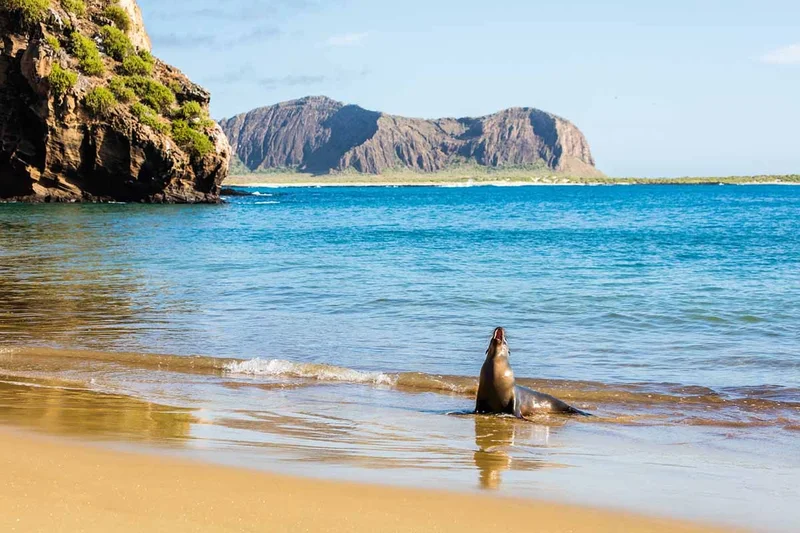
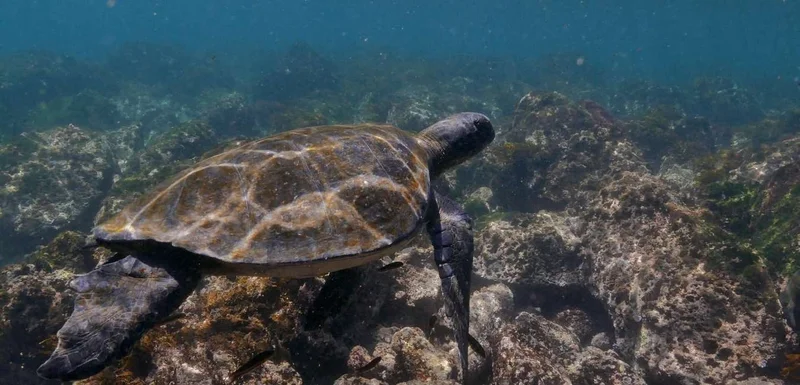
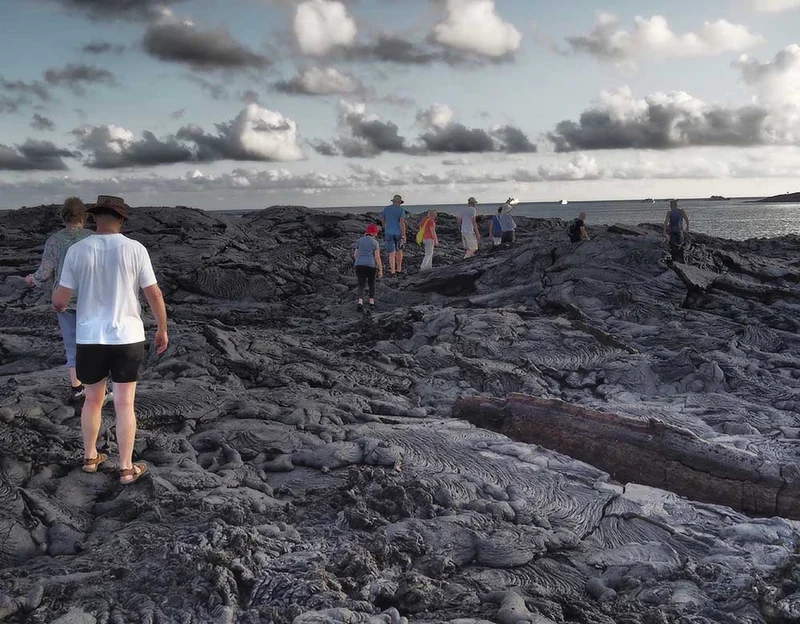
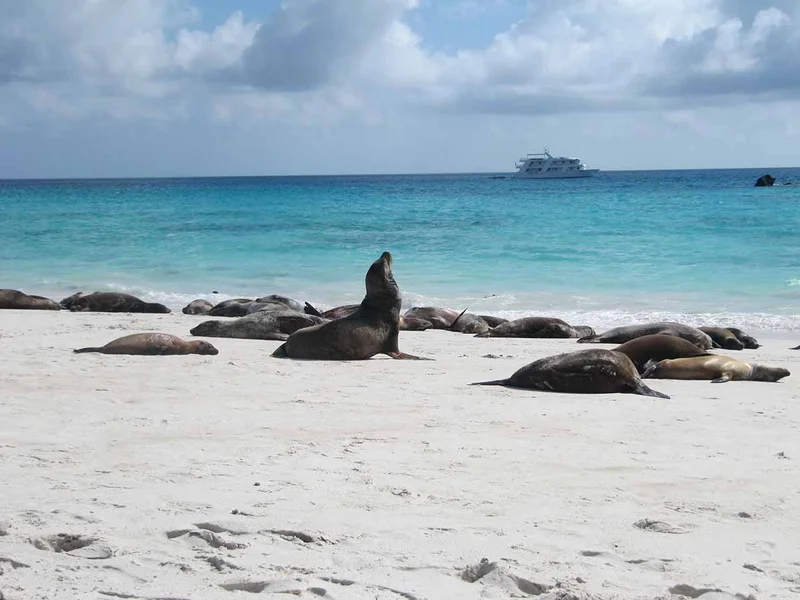
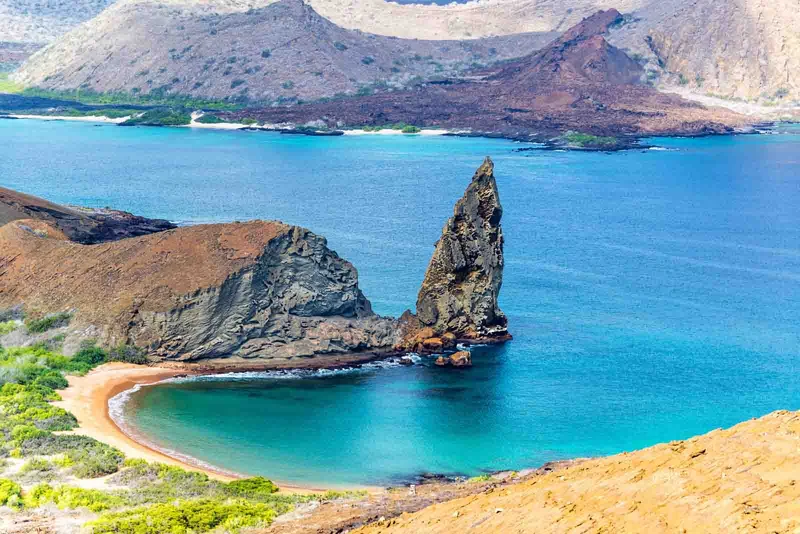
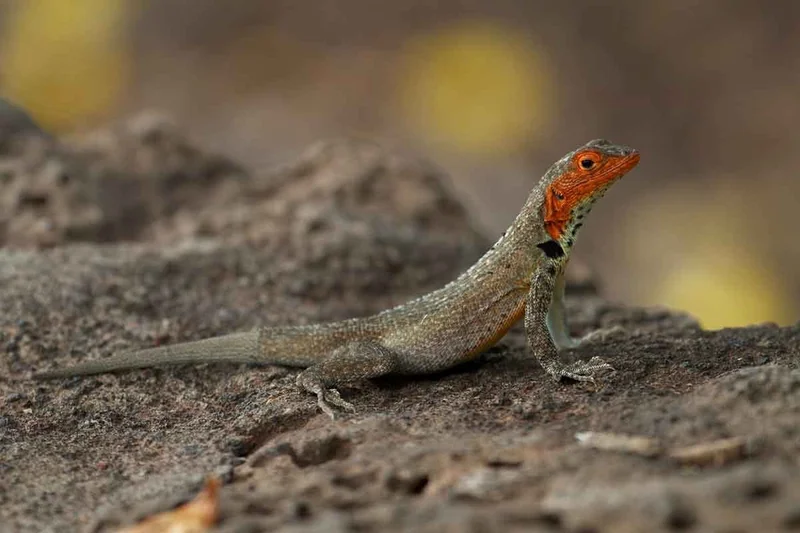

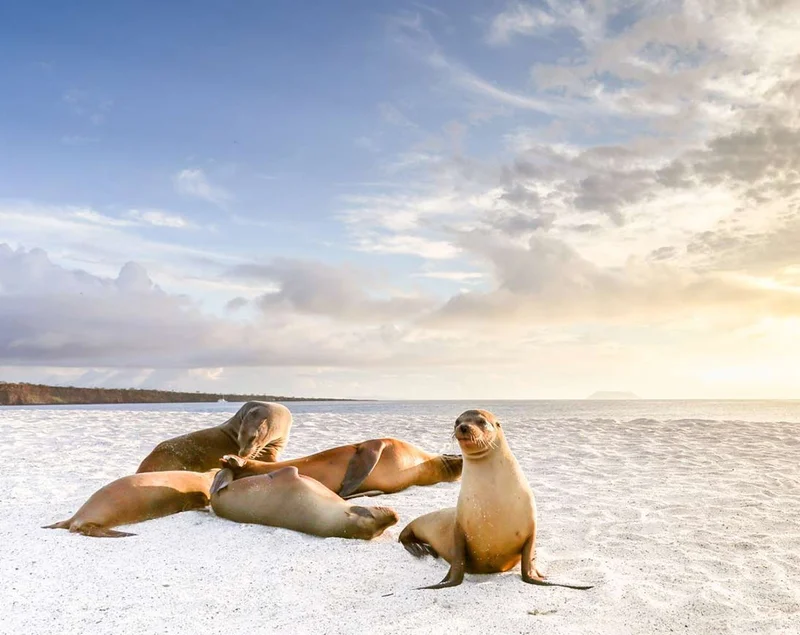
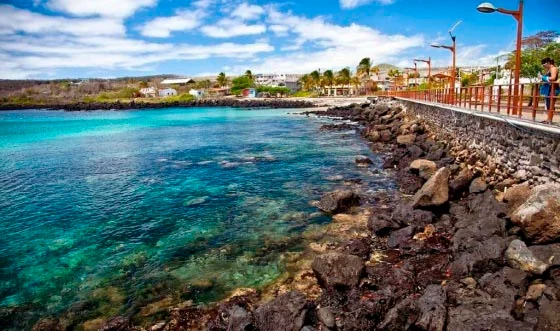
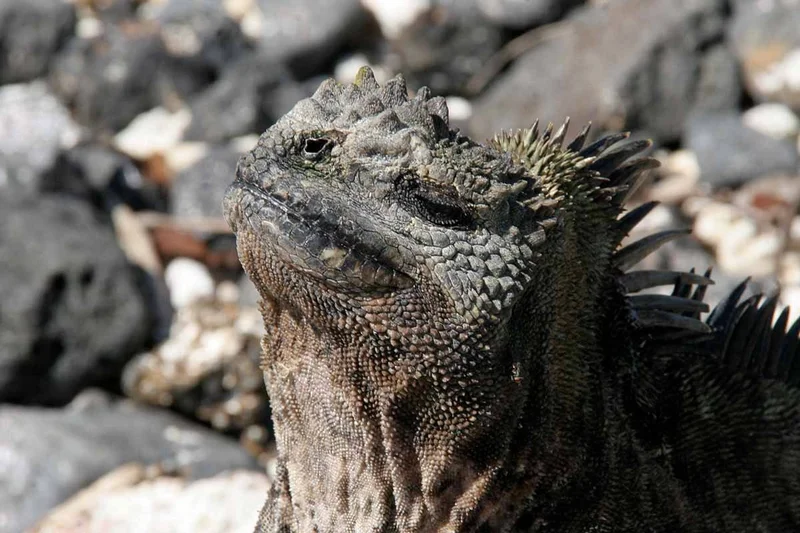
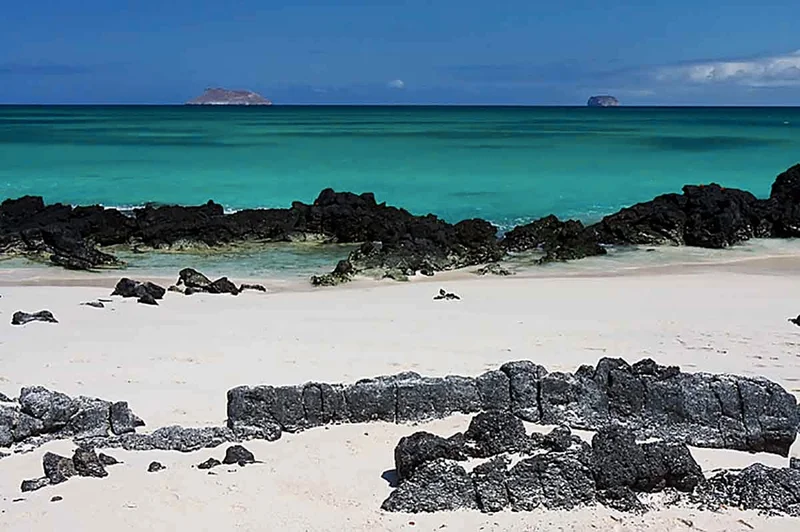
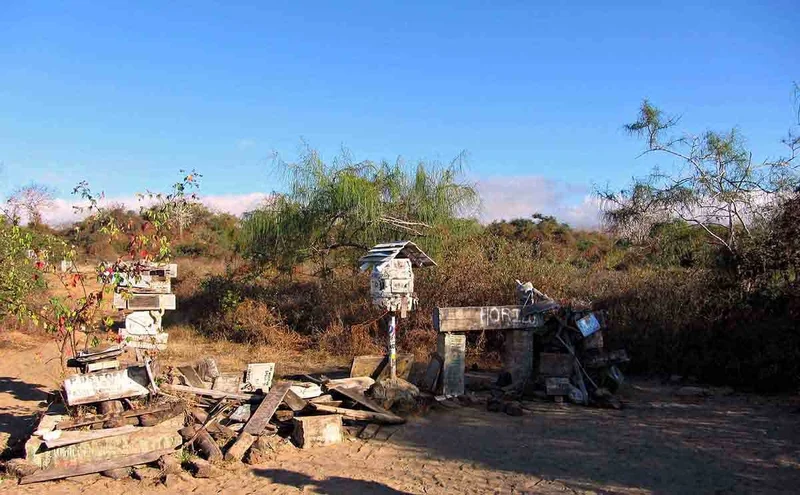

8 Day Galapagos Itinerary Includes
- All programed visits as per itinerary with specialized naturalist bilingual guide;
- Accommodation in twin/double cabin with private facilities (surcharge for suite)
- All meals on board, drinking purified water, coffee and tea
- Snorkeling equipment (fins, mask & snorkel) & sea-kayaks
- Transfers within the islands on cruise dates as per itinerary
- Personalized 24/7 assistance during tour
8 Day Galapagos Itinerary Does not Include
- Airfare to/from Galapagos from/to Mainland Ecuador (to be added)
- Galapagos National Park Entrance Fee US$200 per person (in cash only upon arrival)
- Galapagos Migration Card US$20 in cash per person (at Mainland’s Airport)
- Alcoholic/soft drinks, personal expenses, extras, and tips
- All sizes wet-suits for rent on board (in cash)
- Travel, medical & cancelation Insurance and any services on Mainland
- Other services not specified in the program
8 Day Galapagos Itinerary Highlights
- Look for three different species of Darwin’s Finches and the Albatrosses at Española.
- Snorkel with playful and curious sea-lions.
- Send a postcard to your friends and loved ones back home from Post Office Bay.
- Witness the magnificence of the waved Albatrosses at Española.
- Enjoy amazing views while sailing on board your Yacht from its ample sun-deck or the Jacuzzi.
Itinerary Map

Reviews
Animals you might see on this itinerary:
More information about the Galapagos Islands you visit in this 8 day itinerary:
Enchanted Islands Southern 8-Day Cruise - Xavier III Yacht
Why travel with us?
Similar Itineraries
